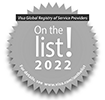Sean Katz leads The Vitality Group in promoting better health through the use of wearable tech and personal data
Interview with Terri Williams; photo by Caleb Fox
Fitness trackers and health apps may be all the rage, but not every adopter understands exactly what to do with all the data their wristband gadgets generate. The health-care and insurance industries are hoping to harness this type of personal data to help people make better decisions about their health; thats what drives The Vitality Group. A division of parent company Discover, an insurance provider, The Vitality Group takes a data-driven, personalized technology approach to help people make meaningful behavioral changes for better health, and its making an impact.
In recognition of its efforts, Discovery landed on Fortunes inaugural Change the World list of fifty-one companies that have made a sizable impact on major global, social, or environmental problems as part of their competitive strategy. Discovery was ranked at number seventeen, and was the only insurer/wellness program on the list.
Sync spoke with Sean Katz, CIO of The Vitality Group, to discuss the companys philosophy and use of technology to motivate people to stay informed and smart about health and fitness.
Were developing functionality that makes sense on the mobile device. Youre not going to take your laptop to the gym, but you will take your phone.
How is The Vitality Group using health data in new and innovative ways?
Sean Katz: Our program incorporates a wealth of big data from a variety of sources, including wellness, activity, and health analytics, to offer insight into how individuals respond to incentives and positively change their behavior. And we use the lessons gleaned from this data to actively engage people in their health.
Weve embraced the concept of the ubiquitous Internet (anywhere, anytime, any device) to securely capture information where people are physically located during the day and in the way that they are most comfortable. For example, wearables, such as step counters and heart-rate monitors, allow us to capture information about a members activity as they are walking or working out at a health club. We use that data to help a client monitor their progress and establish and meet goals. Another form of data that helps us verify participation and progress in our program is when clients swipe their card at partner health clubs. We are connected to the health clubs through attendance data that is used to track progress to goals and reward members for participation.
On our mobile app, people are able to register when they work out. The app is GPS enabled, allowing them to click on their location prior to starting their workout, and if they exercise for at least thirty minutes, the app records this as a workout session.
The app also allows people to submit information to us about events in which they have participated. We use that data to give people participation points. So if they run in a marathon, they can go to the mobile app, capture a picture of their registration form or proof of participation, send it to us, and we give them points for participating in that event.
We also have fitness challenges, such as our steps challenge for members who walk the most steps in a week. These activities are tracked with wearable devices, and we encourage healthy competition with a leaderboard so participants can compare themselves with their friends and coworkers.
- 8.5% increase in productivity employees reported when using wearable technology, according to the study The Human Cloud at Work
- 3.5% increase in job satisfaction when using wearable technology, reported by the same study
- $1.4B worldwide spending on wearable technology by 2016
- 1 in 6 consumers who use wearable technology
How important is security in managing sensitive personal information, and what type of challenges does that present?
Katz: We cant underestimate the importance of taking the security of our clients data seriously, and we are committed to respecting our members privacy and keeping data safe. The challenge is that many of the personalized health technology innovations are getting ahead of the ethical, legal, and social implications, so its critical that we work with developers of wearable tracking devices, embeddable sensors, and other tools to establish guidelines to ensure they are adhering to all ethical and legal mandates.
Our Vitality Institute is working with these developers to establish responsibility guidelines for personalized health technology to offer a reference for the responsible stewardship of personalized health technology, measurable through concrete metrics.
For our systems, we run penetration and security tests on a regular basis to ensure we are compliant, and we never share individual informationeven with the employer who is paying for our services. The information that we do share does not have identifying factors. All of our clients are conscious about security, especially the larger clients, and its a business imperative that we offer a secure environment.
Can you talk about the partnership with John Hancock to integrate life insurance with Vitalitys healthy living program?
Katz: Our US program has focused on helping employers create healthy workforces by offering incentives to encourage healthy lifestyles, which ultimately saves on health-care costs and positively impacts productivity. The John Hancock partnership is a new and unique relationship in that were now helping consumers who are policyholders to live healthier lives. So, when you buy John Hancock Vitality, it differs from any other product on the market because you can realize rate adjustments and cost savings based on your Vitality status.
Policyholders can earn points for getting annual health screenings, avoiding tobacco products, and exercising, among other types of healthy activities. As they accumulate points, policyholders can improve their Vitality status and subsequently save more money on their premiums.
The program is unique in the United States, but not in the world. Our parent company in South Africa, Discovery Limited, has successfully developed this concept in multiple markets globally.
How has The Vitality Group adapted to keep users engaged in its apps amidst the explosion of mobile offerings?
Katz: We dont view mobile as just another web browser, and were not interested in people just having a web browser experience on their mobile device. Were developing functionality that makes sense on the mobile device. Youre not going to take your laptop to the gym, but you will take your phone. So we write and develop apps specifically for mobile devices, because we understand that people want the ability to access the app wherever they are, whenever they need it.
Also, the app that allows you to register a healthy event is very specific to mobile, and you can use the phones camera to submit proof of where you are. Our app is simple, easy to use, and geared to what people want to do on their phones.
Can you describe some of The Vitality Groups gamification features?
Katz: One of our most popular gamification features is Vitality Squares, a game that provides educational information and also allows users to select and reveal whats behind a certain number of cards, which leads to a reward. The number of cards that can be turned over depends on the persons health status. For instance, if they have been engaging in healthy behaviors and are at platinum status, they can turn over six cards. And they can win a variety of prizes, including Starbucks and iTunes gift cards, and even a $500 Amazon gift card. So the members are motivated to take good care of their health so they can win more.
So youre combining a variety of methods to engage consumers?
Katz: Yes. In addition to connecting to a huge variety of mobile devices and apps and using gamification to engage consumers, we have also focused on the social aspect in our challenge platform so people can have workout contests with each other. And then the rewards program also engages people and motivates them; whether they work out, lose weight, or improve vital health statistics, they will improve their status and be eligible for higher benefits. For example, if their blood pressure is at a certain level, theyre rewarded points for that, which is referred to as outcomes-based benefits. They can also get points for just improving their weight and other risk factors, even if theyre not yet at their ideal health. The fact that they are improving will get them points, referred to as activity-based benefits.
In essence, the Vitality program is based on three elements: know your numbers, take action, and get rewarded. The first, know your numbers, encourages users to learn about their health status (through the biometric test given by one of our providers, or they can participate in the Vitality health review). We calculate a Vitality Agewhich may or may not be their actual ageand that helps them identify areas they need to work on. The second element is for users to take action to improve or maintain their health status, and the third is to get rewarded for living healthier.
At The Vitality Group, we believe that incorporating these elements can lead to dramatic changes in how people approach their health and keep them motivated to make improvements.
To access original post, click here.






